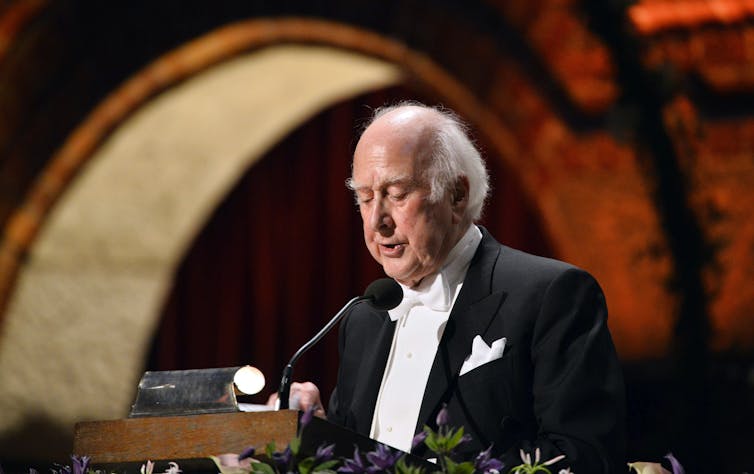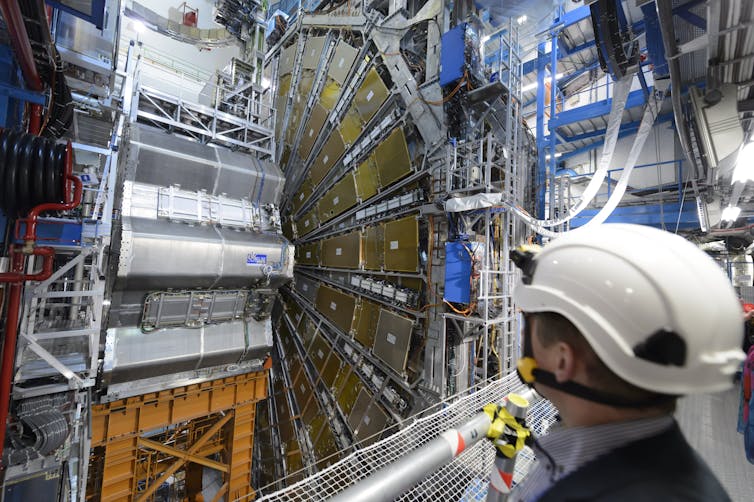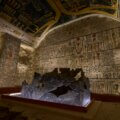Key Takeaway:
Peter Higgs, the creator of the Higgs boson, has died at the age of 94. Higgs, a great scientist in particle physics, discovered the Higgs boson in 1964 after reading a paper by American theoretical physicist Philip Anderson. This led to the development of the Standard Model, which explained how fundamental particles and forces interact. The Higgs boson was later named the “Goddamn Particle” by Nobel prize-winning physicist Leon Lederman. The Large Hadron Collider (LHC) was used to discover the Higgs boson, which is considered a “fifth force” of nature. The discovery of the Higgs boson has led to the development of the Future Circular Collider, which aims to answer many questions about the nature of the universe.
Peter Higgs, who gave his name to the subatomic particle known as the Higgs boson, has died aged 94. He was always a modest man, especially when considering that he was one of the greats of particle physics – the area of science concerned with the building blocks of matter.
In 1964, a few years after arriving from London to take up a position at the University of Edinburgh, Higgs read a paper by the American theoretical physicist Philip Anderson. At the time, physicists did not have a theory for how subatomic particles got their mass. (Mass can be described as the total amount of matter in an object, while weight is the force of gravity acting on an object.)
Anderson’s paper showed that particles can have mass. When a system in physics – such as two different subatomic particles – becomes changed, physicists sometimes describe it as having “broken symmetry”. This can lead to the emergence of new properties.
During a walk in the Scottish Highlands, Higgs had the idea of a lifetime. He figured out exactly how to apply the symmetry breaking he had read about in Anderson’s paper to an important group of particles called gauge bosons. It would lead to an explanation for how the building blocks of matter acquire their mass.
Two other groups of physicists had the same idea at around the same time: Robert Brout and François Englert in Brussels, and Carl Hagen, Gerald Guralnik and Tom Kibble at Imperial College London.
An afterthought
The key distinguishing feature of Higgs’s contribution was that, as an afterthought, he predicted the existence of a new massive particle left over from the process he had worked out in the Highlands. This particle would later bear his name: the Higgs boson.
I believe it was always a bit of an embarrassment to Higgs that this symmetry-breaking mechanism was sometimes shortened to the “Higgs mechanism”. He was always quick to point out everyone else’s contribution and preferred the term: “Anderson-Brout-Englert-Higgs-Hagen-Guralnik-Kibble mechanism”.

Over the next few decades, it became clear how important the contribution of these scientists to our understanding of particle physics was – not least because the particle named after Higgs turned out to be so elusive. Several machines, called particle colliders, were built to probe the limits of our knowledge in physics.
They explored and tested the most widely accepted theory to explain how fundamental particles (those which cannot be broken down into any other particles) and forces interact: the Standard Model. And the Standard Model proved to hold in almost all conditions. The only missing ingredient, which had not yet been discovered by a particle collider, was the massive particle predicted by Higgs.
The frustration at how elusive the Higgs boson was proving prompted Nobel prize-winning physicist Leon Lederman to give it yet another moniker: the “Goddamn Particle”. This was subsequently shortened to the “God Particle”.
It would take 48 years and the largest machine ever made, the Large Hadron Collider (LHC), to finally find evidence that Higgs and his colleagues had been correct. Cern, the organisation which operates the LHC, announced that physicists had almost certainly discovered the particle on July 4 2012.
Further experiments confirmed this was indeed the particle predicted by Higgs. Yet when it was time for the Nobel prize in physics to be announced in October 2013, Higgs went out for a walk instead of staying by the telephone.

A ‘fifth force’ of nature
It is now more than ten years since the discovery of the Higgs boson. There is a big difference between just having a theory that (almost) everyone believes in, and finally having the evidence that it is, in fact, a good description of nature.
Indeed, I’m not sure if we fully understand yet what Higgs and his colleagues have given the world. It amounts to the discovery of a new interaction between particles that we had not seen before, called Yukawa coupling. This is essentially a “fifth force” of nature to complement the gravitational force, the electromagnetic force, the strong nuclear force and the weak nuclear force.
There are many other questions to resolve, however. Only 4% of the universe is made up of the matter that we can see. The rest is dark matter and dark energy – but we do not understand the nature of either. There’s even a theoretical calculation that the Higgs boson is crucial for the stability of the universe.
The Cern Council has just reviewed the progress of a feasibility study to build a machine called the Future Circular Collider, which will succeed the LHC and will aim to answer many outstanding questions about the nature of the universe, if approved. I for one know where I want to look for answers in the collider’s data: the Higgs boson.





























